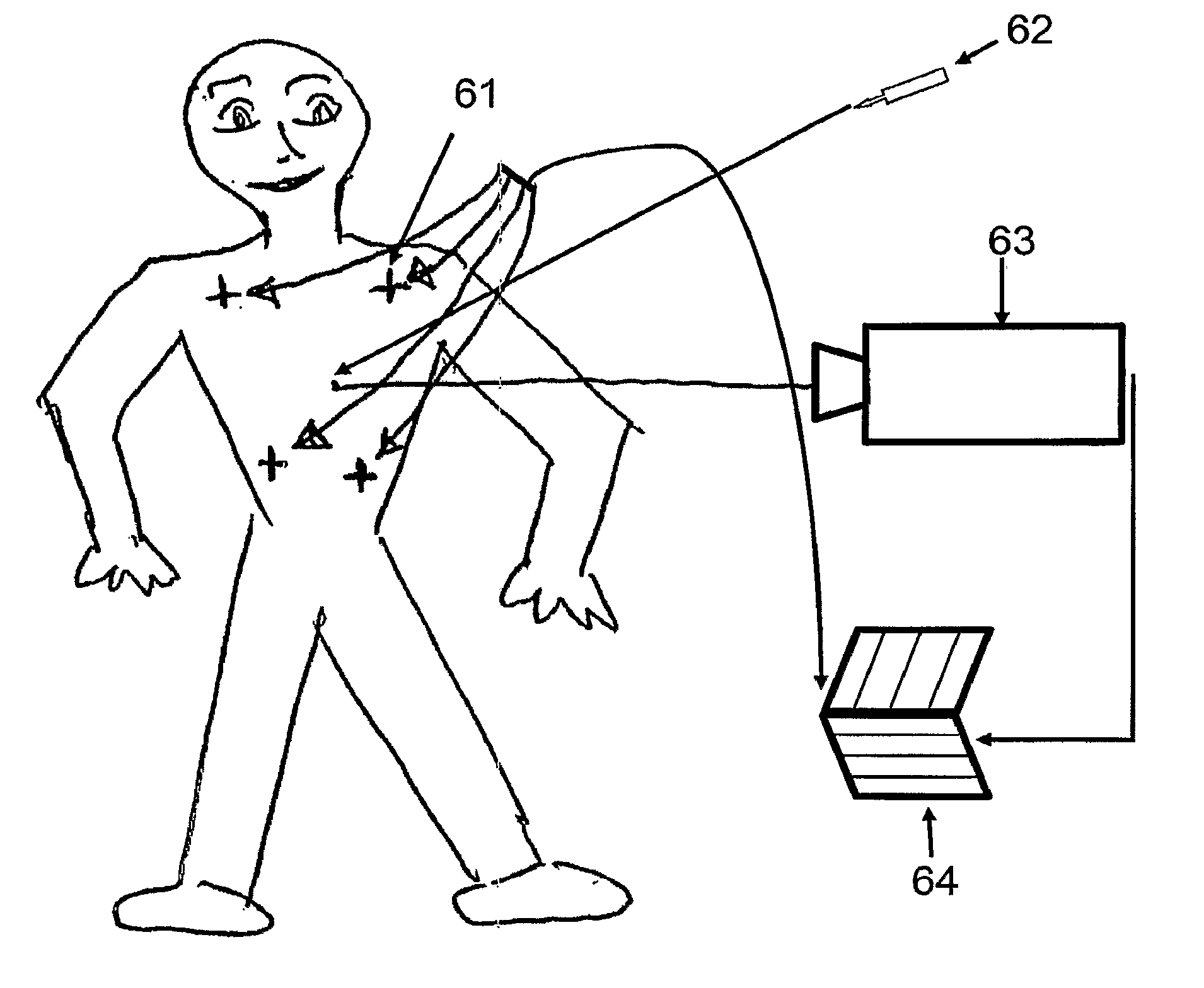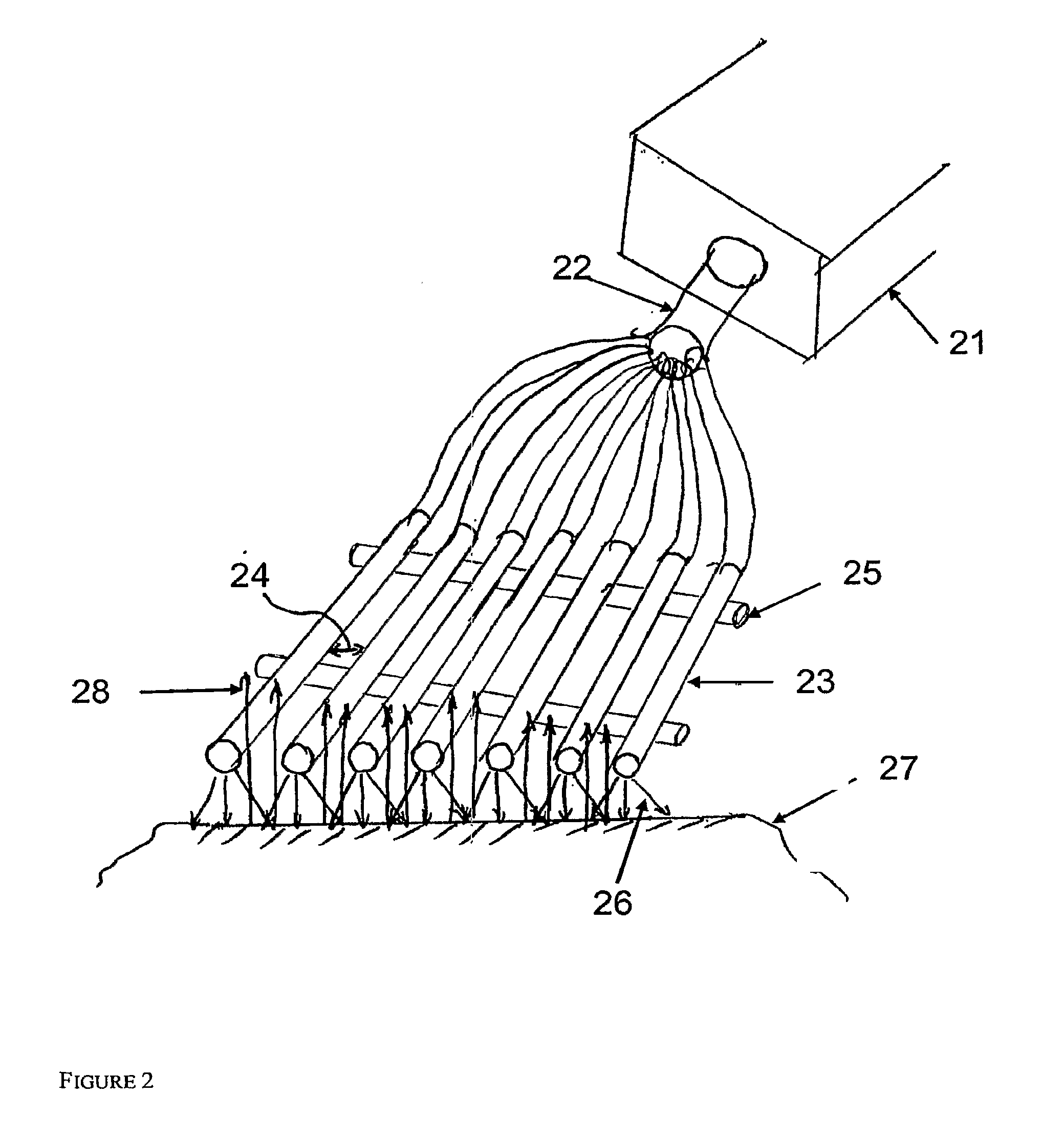Diagnostic system for the detection of skin cancer
a diagnostic system and skin cancer technology, applied in the field of skin cancer diagnostic system, can solve the problems of difficult early detection of malignant melanoma, fatal diagnosis errors, and more likely to spread, and achieve the effect of rapid evaluation and analysis of multiple skin lesions
- Summary
- Abstract
- Description
- Claims
- Application Information
AI Technical Summary
Benefits of technology
Problems solved by technology
Method used
Image
Examples
Embodiment Construction
[0022]The present invention provide methods for identifying, characterizing and distinguishing between non-malignant and malignant skin lesions. In the methods of the invention, a fluorescently labeled probe that specifically binds to a neoplasia associated marker is topically administered to a lesion suspected of being neoplastic. In some embodiments, the probe is administered in a formulation that enhances transdermal penetration, e.g. in DMSO. Neoplasia associated markers of interest include, without limitation, integrin αvβ3 and / or integrin α5β1. The probe preferentially binds to markers present in neoplastic lesions, which binding is detected with a compact illumination unit that provides illumination at a wavelength appropriate for image acquisition.
[0023]Before the present compositions and methods are described in further detail, it is to be understood that this invention is not limited to particular methods described, as such may, of course, vary. It is also to be understood...
PUM
 Login to View More
Login to View More Abstract
Description
Claims
Application Information
 Login to View More
Login to View More - R&D
- Intellectual Property
- Life Sciences
- Materials
- Tech Scout
- Unparalleled Data Quality
- Higher Quality Content
- 60% Fewer Hallucinations
Browse by: Latest US Patents, China's latest patents, Technical Efficacy Thesaurus, Application Domain, Technology Topic, Popular Technical Reports.
© 2025 PatSnap. All rights reserved.Legal|Privacy policy|Modern Slavery Act Transparency Statement|Sitemap|About US| Contact US: help@patsnap.com



